- Rochester Community and Technical College provides accessible, affordable, quality learning opportunities to serve a diverse and growing community.
School Highlights
Rochester Community and Technical College serves 6,080 students (32% of students are full-time).
The college's student:teacher ratio of 19:1 is lower than the state community college average of 22:1.
Minority enrollment is 35% of the student body (majority Black), which is less than the state average of 42%.
Quick Stats (2025)
- Enrollment: 6,080 students
- In-state tuition: $5,624
- Out-state tuition: $5,624
- Student:teacher ratio: 19:1
- Minority enrollment: 35%
- Source: Integrated Postsecondary Education Data System (IPEDS)
Top Rankings
Rochester Community and Technical College ranks among the top 20% of public schools in Minnesota for:
Category
Attribute
Community Size
School Overview
The teacher population of 313 teachers has stayed relatively flat over five years.
Rochester Community and Technical College
(MN) Community College Avg.
Carnegie Classification
Associate's Colleges: Mixed Transfer/Career & Technical-Mixed Traditional/Nontraditional
Associate's Colleges: Mixed Transfer/Career & Technical-Mixed Traditional/Nontraditional
Institution Level
At least 2 but less than 4 years
At least 2 but less than 4 years
Institution Control
Public
Public
Total Faculty
313 staff
153 staff
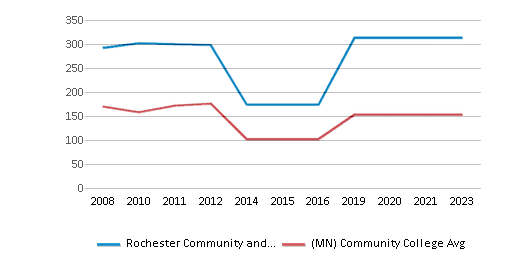
School Calendar
Student Body
The student population of Rochester Community and Technical College has grown by 22% over five years.
The student:teacher ratio of 19:1 has increased from 16:1 over five years.
The Rochester Community and Technical College diversity score of 0.55 is less than the state average of 0.63. The school's diversity has grown by 10% over five years.
Total Enrollment
6,080 students
2,555 students
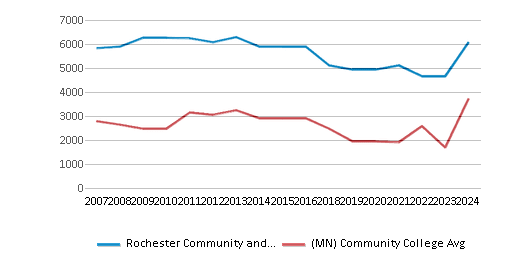
Student : Teacher Ratio
19:1
22:1
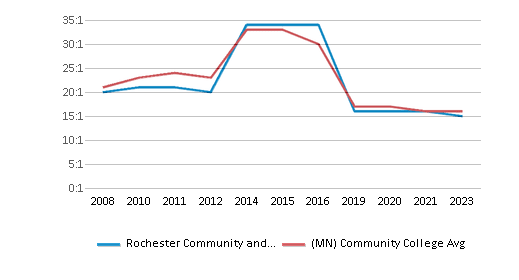
# Full-Time Students
1,950 students
915 students
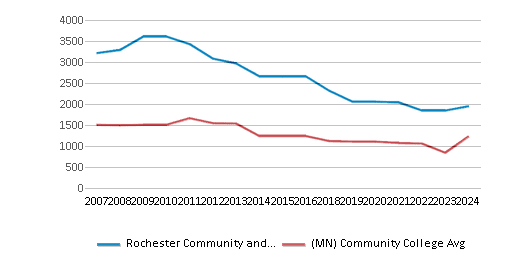
# Part-Time Students
4,130 students
1,808 students
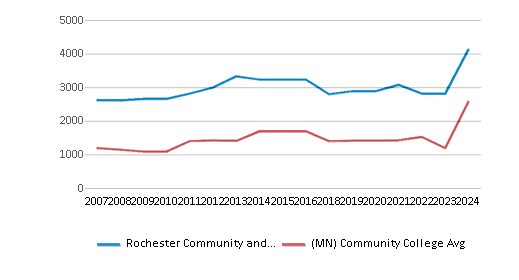
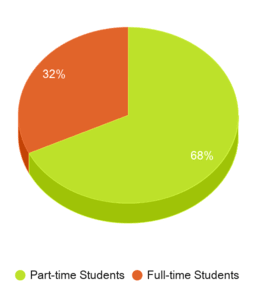
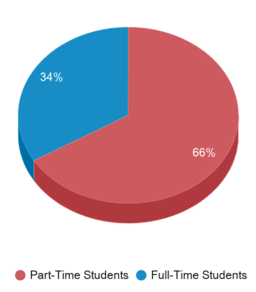
# Enrollment Undergraduate
608 students
372 students
# Full-Time Undergraduate Students
1,950 students
842 students
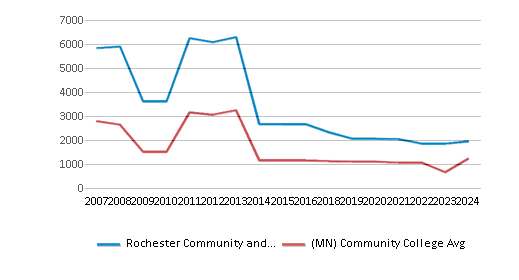
# Full-Time Graduate Students
n/a
38 students
# Part-Time Undergraduate Students
4,130 students
1,771 students
# Part-Time Graduate Students
n/a
12 students
Total Dormitory Capacity
n/a
116 students
% American Indian/Alaskan
n/a
1%
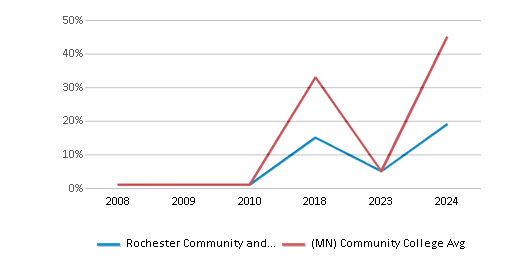
% Asian
5%
6%
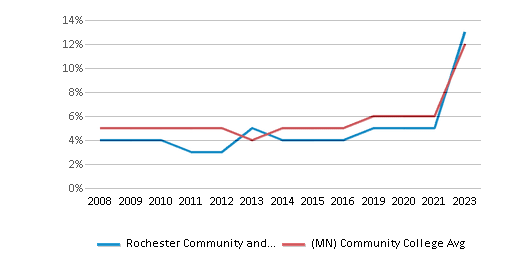
% Hispanic
8%
8%
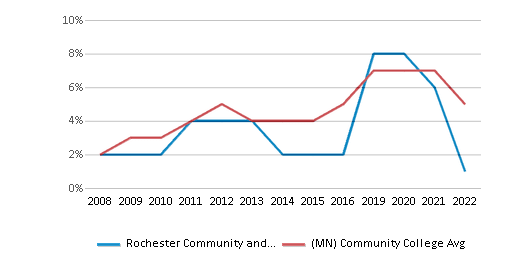
% Black
14%
15%
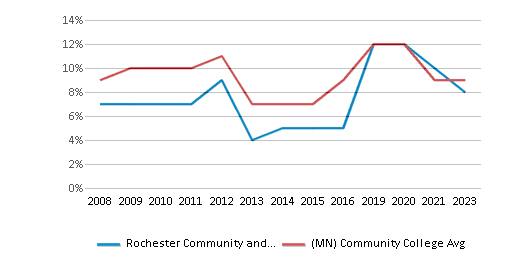
% White
65%
58%
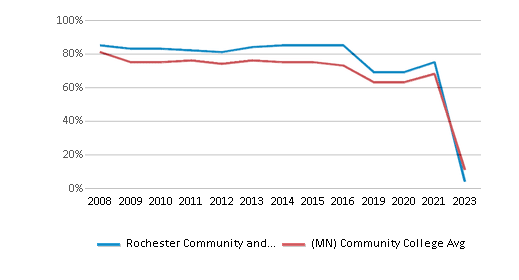
% Hawaiian
n/a
1%
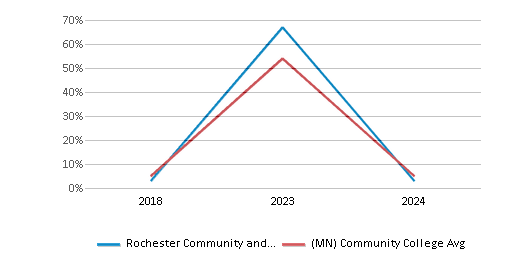
% Two or more races
4%
4%
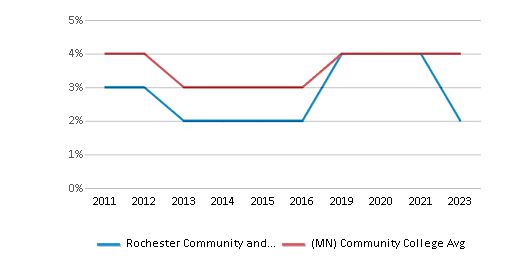
% Non Resident races
1%
1%
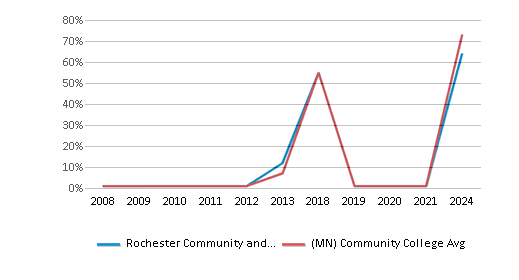
% Unknown races
3%
6%
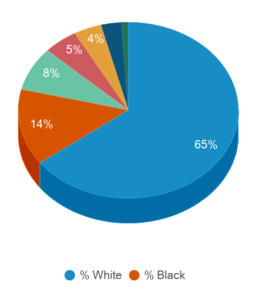
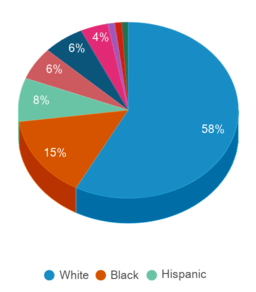
Diversity Score
0.55
0.63
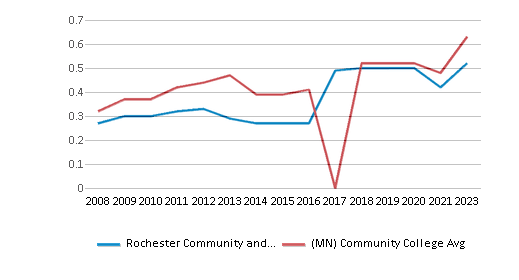
College Completion Rate (Students who graduate in less than 4 years)
0.2441%
0.3421%
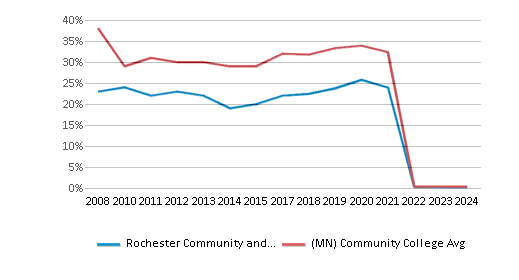
College Completion Rate (Students who graduate in 4 years or more than 4 years)
n/a
0.5652%
Average Graduate Earnings (10 Years)
$37,200
$36,900
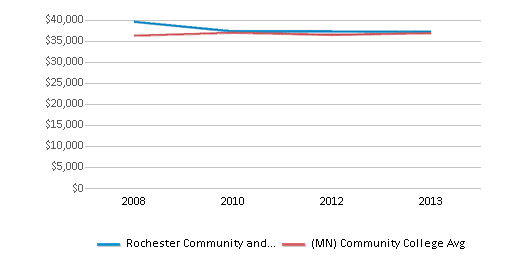
Tuition and Acceptance Rate
The public in-state tuition of $5,624 is more than the state average of $5,489. The in-state tuition has grown by 7% over four years.
The public out-state tuition of $5,624 is less than the state average of $6,145. The out-state tuition has grown by 7% over four years.
In-State Tuition Fees
$5,624
$5,489
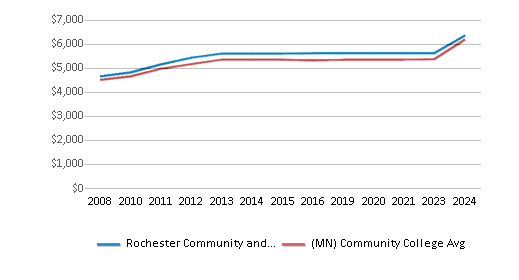
Out-State Tuition Fees
$5,624
$6,145
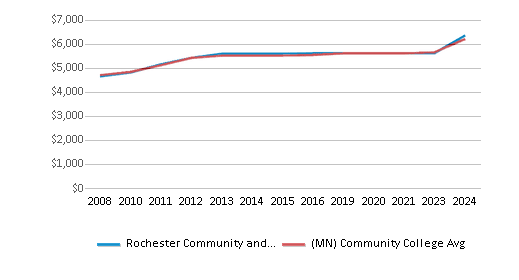
% Students Receiving Some Financial Aid
78%
89%

Median Debt for Graduates
$14,968
$12,264
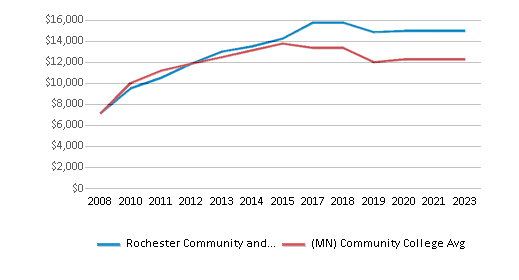
Median Debt for Dropouts
$6,500
$6,747
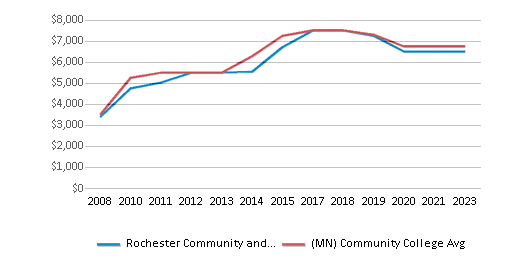
Acceptance Rate
n/a
94%
SAT Reading
n/a
625
SAT Math
n/a
600
SAT Writing
n/a
565
ACT Composite
n/a
24
ACT English
n/a
24
ACT Math
n/a
23
ACT Writing
n/a
8
Source: 2024 (or latest year available) Integrated Postsecondary Education Data System (IPEDS)
School Notes
- Rochester Community and Technical College is a two-year regional college serving the southeastern Minnesota area. The College provides curricula that are designed to meet a variety of academic and career educational opportunities that prepare students for work, life, and additional education now and into the future. Programs lead to the award of certificates, diplomas, and degrees such as Associate in Applied Science, Associate in Science, and Associate in Arts. The college has a great faculty and staff; state-of-the-art classrooms, labs, and shops; and an advanced technology infrastructure supporting more than 70 technical and transfer programs. Our Department of Continuing Education, Customized Training, and Economic Development delivers credit and non-credit education and training for today's rapidly changing workforce. Rochester Community and Technical College and our higher education partners, Winona State University Rochester Center and the University of Minnesota Rochester Center, are collocated on the beautiful University Center Rochester campus. Articulated programs of study allow you to complete your first two years of college at RCTC and then stay in Rochester for selected four-year and graduate programs and study. Rochester Community and Technical College is accredited by the the Higher Learning Commission.
Frequently Asked Questions
How much does Rochester Community and Technical College cost?
Rochester Community and Technical College's tuition is approximately $5,624 for In-State students and $5,624 for Out-State students.
What is Rochester Community and Technical College's ranking?
Rochester Community and Technical College ranks among the top 20% of community college in Minnesota for: Largest student body.
Recent Articles

Obtaining Your Bachelor's Degree at a Community College
Explore the evolving landscape of community colleges offering bachelor's degrees, addressing affordability, accessibility, and workforce needs.

A to Z of Community College Certificates and Courses
From business and healthcare to technology and skilled trades, the article showcases the breadth of options available to students seeking to enhance their knowledge, develop new skills, or pursue career advancement.

What is a Community College?
This comprehensive guide explains what a community college is, its history, and its role in higher education. It covers the types of programs offered, differences from four-year colleges, benefits of attending, and important considerations for prospective students, providing valuable insights for those exploring educational options.










